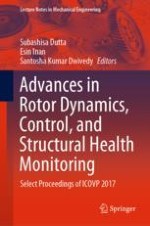2020 | OriginalPaper | Buchkapitel
Structural Health Monitoring Using Improved Subspace Identification Method by Including Rotational Degrees of Freedom
verfasst von : Diptojit Datta, Anjan Dutta
Erschienen in: Advances in Rotor Dynamics, Control, and Structural Health Monitoring
Verlag: Springer Singapore
Aktivieren Sie unsere intelligente Suche, um passende Fachinhalte oder Patente zu finden.
Wählen Sie Textabschnitte aus um mit Künstlicher Intelligenz passenden Patente zu finden. powered by
Markieren Sie Textabschnitte, um KI-gestützt weitere passende Inhalte zu finden. powered by
